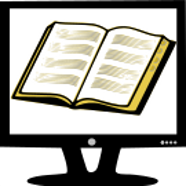
We know well that the world is rapidly changing. What is really amazing is the pace of change of society and human attitudes. We behave and work every day according to styles and habits that we could not predict a short time ago. Twenty ears ago we were living without cellular phone, without (or very limited) use of email and internet, and therefore without social networks. Today we hardly remember how our life was at that time. The availability of technology radically changed our life style, and I think this change is positive. I have no doubt that the mobile phone made my life easier, as well as the email and, above all, the web. When I was a student, the only way of getting information was through books and documents suggested and sometimes made available by the teacher. Books were expensive, and the teacher's documents sometimes not readily available and not updated. I spent a lot of time in libraries, to get the information that I needed. Today, studying has become easier and, more important, more easily accessible to everybody.
However, it is surprising to note that teaching means and teaching styles in universities have not changed much. One friend of mine says that a a surgeon who operated 50 years ago, if placed today in a operating room, would not be able to do anything. Conversely, a university professor who taught in 1950, if placed today in a university room, could easily teach. Well, he might be a bit confused to see a projector and some computers on the students' desk, but he could easily manage the blackboard anyway. This is not necessarily a sign of backwardness, but it is interesting to wonder whether it is the case of adapting the academic teaching style to modern technologies. For sure, the answer is yes, and therefore the question becomes how to adapt.
I think that we urgently need to profit more from the web in our everyday educational activities. Internet is a formidable source of information and education, provided the teacher and the student are efficient in selecting the material that is therein presented. The distinguishing feature of the web is its accessibility and its up-to-date status. The web is always updated and therefore provides the opportunity to build and make available a dynamic source of information. In the modern university, we should become aware that books are a source of information that is becoming not convenient, as it is expensive and static, and therefore become rapidly outdated. We should move towards web books, namely, collection of dynamic web pages that are continuously updated, to provide a free, globally accessible and qualified information, and to keep the pace of research and emerging technologies.
Some years ago I started taking videos of my lectures, with the aim of providing open educational material. This year I started to provide my educational material in the form of web pages, which contain hyperlinks to several sources of information that I selected, to videos and pictures. The reader that wants to get an example may look at the lectures of my 2015-16 of Advanced Hydrology: the introduction, the page on design peak flow and design hydrograph estimation and the page on model calibration and validation. The next step will be to make these pages open to the contribution of the community, to build a comprehensive web book.
Keeping this material available and efficient will not be easy. I will need to check the links every year. Also, web pages may easily vanish, while a book is forever. However, I am convinced that web books are the best strategy for students, and therefore the best way forward to make sure that research results are readily made available to support technological transfer.
Alberto
- 94 viste
